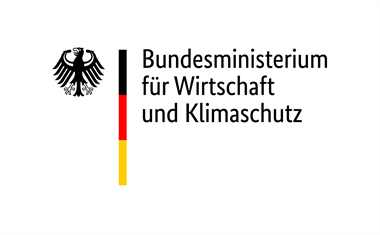Recycled material in fiber-reinforced hybrid composites - ReProHybrid
Recycled material in fiber-reinforced hybrid composites
Project background
Recyclate is currently rarely used in industry. Recycled plastics are perceived as inferior materials. In the more acceptance needs to be created for them as part of the circular economy. This should be made possible through targeted upcycling.
Project objective
The aim is to ensure that the unreinforced components after painting neither to be thermally recycled nor to be to process them into recyclate and to counteract the reduced mechanics using fillers and and reinforcing materials to counteract or even increase the reduced mechanical properties.
This is to be achieved with the help of a process hybrid consisting of a formed continuous fibre-reinforced thermoplastic (organo sheet) and the functionalization by means of injection-moulded functionalization using a fibre-reinforced compound. The particle inclusions are to be hidden by laminating surfaces in the later process.
Project procedure
First of all, the scrap components (bumpers after painting) are to be processed into regrind using a suitable shredding process. This regrind is then to be used as a matrix material for the production of organosheets. In cooperation and with the know-how of Bond Laminates the appropriate process parameters are determined to meet the requirement profile of the continuous fiber-reinforced thermoplastics.
The implementation of the new material combination as a hybrid composite is possible via injection mold specially designed for hybrid composites. Due to the unknown material combination, the parameters required for the mold design necessary characteristic values for the mold design and to include them in the design. The mold design, simulation and implementation will be carried out in collaboration with Inotech.
Furthermore, the organic sheets produced from the recyclate will be used depending on the application or, in this case, the demonstrator. Similar to the already active ReProOrgano research project research project ReProOrgano at the Rosenheim Technical University of Applied Sciences, be recycled in the process and mixed for functionalization to the desired and necessary fibre weight content.
Innovation
The key feature of the project is the upcycling of already painted scrap components for use in new, mechanically highly highly stressed exterior components and thus a further step towards a circular economy that protects our environment and reduces the use of materials.
Project lead
Project staff
T +49 (0) 8031 / 805 - 2681 Sabine.Hummel[at]th-rosenheim.de
T +49 (0) 8031 / 805 - 2266 Frederik.Obermeier[at]th-rosenheim.de
ORCID iD: 0009-0007-6049-9017
T +49 (0) 8031 / 805 - 2379 simone.luxenburger[at]th-rosenheim.de
ORCID iD: 0000-0002-2119-5471
Project collaboration
T +49 (0) 8031 / 805 - 2882 yogeshkumar.yadav[at]th-rosenheim.de
External project collaboration
Project duration
2023-10-01 - 2025-12-31Project partners
Project funding

Funding programme
Zentrales Innovationsprogramm Mittelstand

